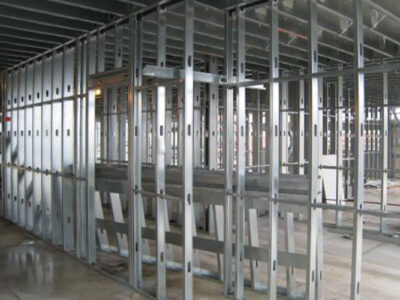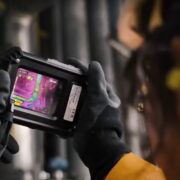
In hazardous environments where safety and efficiency is important, thermal imaging technology emerges as a crucial ally. This innovative tool enables professionals to see beyond the capabilities of the naked eye, detecting heat signatures and converting them into visual data. Let’s explore the transformative benefits of employing thermal imaging in challenging settings, shedding light on its impact on safety, maintenance, and operational continuity.
Enhancing Safety in Real-Time
The primary advantage of thermal imaging in hazardous environments is the significant enhancement of safety it provides. By detecting temperature variations and heat sources, thermal imagers can identify potential hazards before they escalate into serious incidents. For instance, in chemical plants where the risk of overheating equipment could lead to explosions, thermal imaging allows for the early detection of hotspots that are invisible to the naked eye. This pre-emptive approach not only protects assets but, more importantly, saves lives by preventing accidents.
Moreover, thermal imaging facilitates safer inspections of potentially dangerous equipment. Technicians can conduct thorough checks from a safe distance, reducing the risk of exposure to harmful substances or high temperatures. This non-invasive method of monitoring ensures that safety protocols are adhered to without compromising the thoroughness of inspections.

Preventive Maintenance and Downtime Reduction
Thermal imaging cameras are indispensable tools for predictive maintenance within hazardous environments. By revealing abnormalities in machinery, such as overheating components or electrical faults, they allow for repairs to be made before failures occur. This proactive maintenance strategy helps avoid unplanned downtime, which can be costly and disruptive, especially in continuous operation industries like oil and gas or power generation.
An industrial thermal imaging camera is particularly valuable in this context. It enables the continuous monitoring of equipment, capturing temperature anomalies that might indicate wear or impending failure. With this information, maintenance can be scheduled at convenient times, improving efficiency and extending the lifespan of critical machinery.
Operational Efficiency and Energy Savings
Thermal imaging contributes significantly to enhancing operational efficiency and energy conservation. By identifying areas of energy loss, such as poor insulation or leakage in heating systems, companies can implement corrective measures to improve energy efficiency. In large industrial settings, even minor improvements can lead to substantial savings in energy costs over time.
Additionally, thermal imaging supports the optimisation of processes by ensuring equipment operates within ideal temperature ranges. This optimisation not only conserves energy but also ensures the quality of production, as many industrial processes depend on precise temperature control. The ability to monitor and adjust temperatures in real-time contributes to a more efficient, cost-effective operation.

Supporting Emergency Response and Environmental Monitoring
In emergency situations, thermal imaging cameras provide critical information that supports effective response efforts. For instance, in the event of a fire, they can help locate the source and monitor the spread of flames, even through smoke or in low-visibility conditions. This capability is invaluable for firefighting teams navigating hazardous environments, allowing them to tackle fires more strategically and safely.
Beyond emergency response, thermal imaging plays a role in environmental monitoring, helping to detect and prevent pollution. In industries where environmental impact is a concern, such as oil refining or waste management, thermal cameras can identify leaks of gases or liquids that are hazardous to the environment. Early detection facilitates swift action to mitigate impacts, demonstrating a commitment to environmental stewardship.
Accessibility and Ease of Use
One of the most compelling benefits of thermal imaging technology is its accessibility and user-friendly nature. Modern thermal cameras are designed for ease of use, with intuitive interfaces and advanced features that allow for quick analysis and interpretation of thermal data. This accessibility means that personnel across various levels of technical expertise can effectively utilise thermal imaging in their daily operations.
The portability of handheld devices enables on-the-spot diagnostics and inspections, making thermal imaging a versatile tool for a wide range of applications. Whether it’s for routine maintenance checks, safety inspections, or emergency response, thermal imaging cameras are an indispensable asset in hazardous environments.
Thermal imaging technology has transformed how industries approach safety, maintenance, and efficiency in hazardous environments. Its ability to detect and visualise heat signatures offers a unique perspective, revealing hidden dangers and opportunities for optimisation. As industries continue to embrace this technology, the benefits of thermal imaging will only become more integral to maintaining safe, efficient, and sustainable operations.










